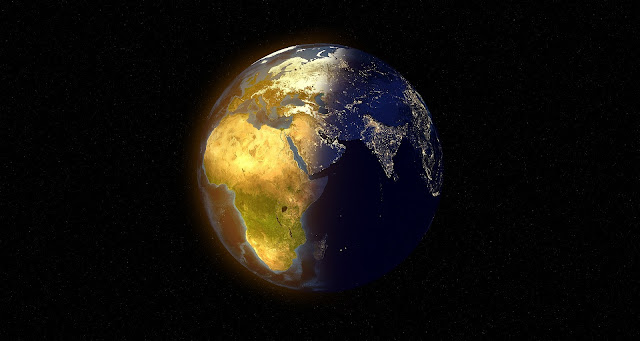The driving force and the source of weather
Sources of energy for weather systems
The Sun is the source of energy for weather systems. Although the sun is situated at a distance, but it is so powerful that its warmth and intense light are dominant during the day. This energy from the sun is responsible for driving winds and extraction of water vapour from the surface into the atmosphere to fall as rain or snow later on. Earth receives a very tiny portion of the energy of the sun which sufficient to sustain all life on earth.
The heat and light from the sun are the daily drivers of weather. Only a portion of Earth receives sunlight at a time. As the position of the sun changes, the central point of application of heat on the Earth and the atmosphere also changes. The surface winds tend to move towards the point of application of heat by the sun as the hot air at the point of concentrated heat expands or becomes less dense and moves upwards. As the day and night cycle goes by, the point of application of heat moves continuously towards the West. This is the prime driver of the daily changes of weather.
The fossil fuels like coal and petroleum are also stored energy of the past. When they are burnt, the heat energy is released to the atmosphere.
The other source of weather upheaval is the moon which also extends its influence from a distance. The moon is prominently felt at night as moonlight, in which no heat is felt and it feels cool, unlike the sunlight which has a bright and heating effect.
The sources of energy loss
Heat is naturally radiated by the earth and the atmosphere as they tend to cool down.
Energy balance
The earths temperature remains constant. It does not heat up or cool down even though it is constantly receiving energy from the sun and also radiating heat away into space. It means that the energy flow into the earth and out of the earth is kept balanced so that the average temperature of the Earth does not increase or decrease. How this balance is maintained nicely is a subject of further study.
Agents of heat transfer
The hot air and hot water vapour become a medium of heat transfer. Water vapour has a high capacity to carry heat.^
Water emanates from the oceans in the form of vapour and when it reaches the upper parts of atmosphere, the temperature is low enough to cause condensation around minute particles of dust and other things. The condensation when viewed from a distance appears as an opaque object reflecting light - the cloud.
The water cycle
The sun drives the water away from the sea and other water bodies in to the air in the form of water vapour. This water vapour is transported by the action of the wind, then it condenses in the atmosphere and falls on the land as rain. The rain falls on the land and flows downward, forming rivers which falls back into the ocean and other water bodies. Thus water molecules move around in the form of a cycle which is called the water cycle.
Density gradient of air
By the force of gravity, air tends to collect at the bottom of the atmosphere which is the surface of the earth. The density of air is the highest at the bottom and least at the top.



Comments
Post a Comment